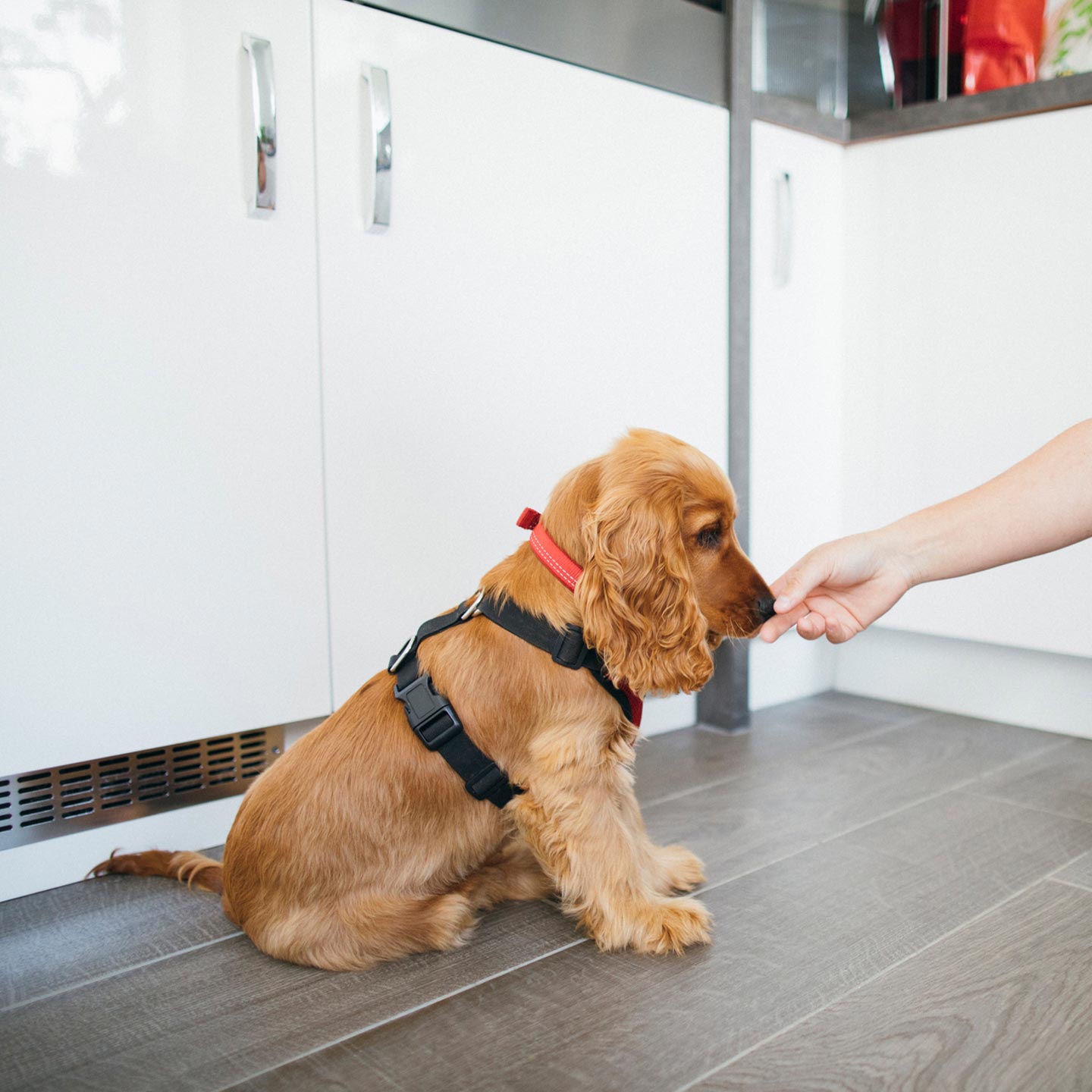Are you spending a lot more time at home with your dog lately? Yeah, us too. So why not put that extra time together to good use? Now’s the perfect time to train your dog, whether you’re teaching your pet an awesome new trick or brushing up on basic commands.
And the best part? It doesn’t have to take all day. “Most dogs don’t have a very long ability to concentrate,” so all you really need is five minutes with your pup to create a teaching moment, says Irith Bloom, CPDT-KSA, CDBC, who owns The Sophisticated Dog training company in Los Angeles, California. And if you have even more time—up to 30 minutes at a stretch—why not use it to your (and your furry friend’s) advantage?
Here’s how to train a dog, whether you have five minutes or longer.

iStock.com/SolStock
If You Have 5 Minutes
Maybe your dog was great at “sit” back when they completed puppy training, but now they’re not as consistent. In just five minutes a day, you can get your pup back on track, Bloom says.
First, take your dog to the place in your home where they’re most likely to sit. Often this is the room or area in your home where you first worked on training, Bloom says. Tell your dog to sit, and when they do, give them a treat.
Then, move five feet away from the spot where your dog sat, and give them the “sit” command again. Move another five feet, say “sit,” and treat your dog when they listen. Keep moving, and keep treating when your dog gets it right. “This helps your dog understand that ‘sit’ means the same thing, no matter where he is,” Bloom says.
After a few daily sessions, your dog will have mastered that game. Now it’s time to get a little wild.
“Jog away from your dog, then stop in your tracks and say ‘sit,’” and feed a treat when they comply, Bloom advises. “Keep doing more and more exciting and energetic things. Maybe you do jumping jacks. Maybe you dance around. Maybe you do push-ups,” Bloom says. “The quiz for your dog is, ‘Can you sit while I’m doing weird things? Can you sit even though I’m being a little exciting?’” This helps your pup focus on you, even in situations with plenty of distractions, she says.
And you don’t have to stop at “sit.” Bloom says these strategies will work with any command your dog has already learned, including useful skills like “down,” “stay” and “come.”
Just remember to be mindful of your dog’s limitations. Dogs with orthopedic issues or other aches and pains shouldn’t be forced to move in ways that are uncomfortable, even if it’s just a simple sit. “If you have a dog with arthritis, practicing ‘sit’ over and over can be really hard for them,” Bloom says.

iStock.com/SolStock
If You Have 10 Minutes
“When dogs are learning something brand new, sometimes it takes a little longer for them to start getting the idea,” Bloom says. That makes 10 minutes a perfect amount of time to teach a skill they’ve never learned before.
Let’s say you want to teach your dog to roll over, Bloom says. First, have your dog lie down. Then, with a treat in your hand, lead the dog’s nose up and around to their shoulder, until they roll onto their back and then onto their other side. When they’ve rolled over, feed them the treat.
Spend about two minutes working on that skill, Bloom advises, then take a break. Spend 60-90 seconds petting your dog, or tossing some treats on the floor and letting them track and eat them, she suggests.
Dogs need that break for two reasons: First, learning new tricks can be physically difficult for dogs. “They’re using weird muscles that they don’t normally use,” Bloom says. And secondly, breaks give your dog a chance to process what they’ve been doing. “There’s a lot of learning that happens in the moments between training,” Bloom says.
When those 60-90 seconds are up, it’s time for another two minutes of training. Repeat that process until 10 minutes are up.
After several daily sessions, your dog will learn to roll over to get the treat in your hand. Now, try the same thing without a treat in your hand—but remember to grab a treat and give it to them after they’ve rolled over! When your dog has mastered that, start saying “roll over” while moving your empty hand. Keep rewarding your dog with treats when they get it right, and eventually your pup will roll over on command!
“You can do this with lots of fun tricks,” Bloom says. “Teach them to give paw, or to wave at you. All those behaviors are good for a 10-minute session.”

iStock.com/SolStock
If You Have 30 Minutes
Most dogs’ attention spans aren’t built to last for longer than 10 minutes, Bloom says. So, if you want to spend half an hour in training mode, you’ll have to mix things up.
“Start with five minutes taking your dog through all the things they know,” she says. Rotate through down, sit, paw, lie down, roll over, all of your dog’s commands. Keep your dog guessing, and treat them each time they get it right.
After five minutes of commands, clip the leash on your dog, Bloom says, and “for the next five minutes, see how nicely your dog can heel by your side.” Walk forward. Walk backward. Side step. Jog a few steps, then stop. Treat your dog when they keep up with you, staying calmly by your side.
Then, take the leash off and spend the next five minutes playing a game with your dog—“tug of war, fetch, roll the ball, whatever your dog thinks is really fun,” Bloom says. “You just worked him a lot. You put him through all these behaviors, put him on leash, and he was really focused. He’s going to start getting really tired. So, give him five minutes of play—then cycle through the same thing again.”
“What you will probably find,” she adds, “is that at the end of a half hour like that, your dog is going to want to go hang out in their bed because they’re really tired!”
Hey, that’s not a bad way to get your dog to nap during your Zoom conference call!
Whether it’s five minutes or a full half hour, it doesn’t take much to improve your pup’s skills—and to practice your own prowess as a dog trainer! Take it from Bloom: “If you devote five minutes once a day, your dog will progress.”
Share:













